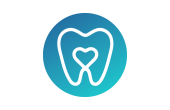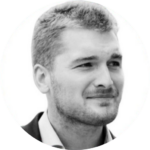DENTAL PRE-DIAGNOSIS AND FORMALIZATION OF REPORTS
ISSUE
Lovis is a startup that offers a web platform and telemedicine services for oral health. The company aims to improve oral prevention for everyone, in particular, by optimising care pathways. To achieve this, Lovis relies on decision trees along with AI analysis of photos or 3D scans taken at home, in health institutions or in dental offices to perform automated oral pre-diagnosis.
SOLUTION PROVIDED
Neovision used its expertise to create an Artificial Intelligence technology capable of making a pre-diagnosis based on the 3D dental scans received by Lovis. To do this, Neovision first worked on segmenting the teeth and then on classifying them to diagnose certain pathologies: caries (and fillings), tartar (and plaque), or even root canal teeth. All of this was done using only 3D dental scans performed by health professionals.
CUSTOMER BENEFIT
In the short term, Lovis has a solution that will enable it to considerably increase its capacity to process scans. This AI-based technology assists Lovis and any dental surgeon who might be a client of the solution in oral diagnosis by establishing an initial visual pre-diagnosis on 3D scans and by formalising patient information and recommendations resulting from the diagnosis in an automatically edited report. This technology enables Lovis to achieve its goal: promoting prevention and improving access to oral health care for all.
RÉALIZATION
The two companies were introduced to each other through their corresponding CEOs and thanks to an excellent intermediary: Minalogic. All this took place within the framework of the EasyTech programme, which aims to accelerate and facilitate technology transfers (moving a technology from a laboratory to a company). Charles Faroche, Medical Director and co-founder of LOVIS, proposed his project and Lucas was to audit it. By getting to know each other, the two managers were already laying the foundations for a fruitful collaboration.
From the beginning, Charles explained the issues he wanted to address and his ambitions. The whole thing is clear: to date, LOVIS’ objective has been to make oral care accessible to seniors and elderly people in a situation of dependence. Indeed, going to a dental surgery is a real ordeal for these patients and oral care is regularly postponed until later. His idea is therefore to bring oral care to health establishments and EHPADs by offering a complete solution combining a teledentistry platform, pre-diagnosis, and recommendations for treatment. It will even go so far as to develop the “Smartch” or Intelligent Matching to coordinate care according to mobility (patient) and accessibility (practitioner) as well as the level of cognitive disorders (patient) with the technical platform (practitioner).
Data, anonymisation, annotation
Neovision took the project head on and started designing a platform that would enable a dental pre-diagnosis on 3D scans. To do this, the AI team needed representative data such as 3D scans, metadata relating to these scans, typical CRs, etc.
Of course, each scan sent to Neovision had to be fully anonymised and recorded. As you can imagine, Neovision is not a dental health specialist, so LOVIS’ expertise was essential. Indeed, recording this type of scan is done through an expert interpretation since the diagnosis of certain pathologies is as subtle as critical.
LOVIS therefore sent Neovision 3D scans of the dentition and even the teeth of real patients, which were completely anonymised and annotated. This annotation involved the identification of the teeth and the interpretation of their condition with the presence of pathologies or not. For a first prototype, the Neovision technical team was able to use 90 annotated 3shape scans (80 for training, 10 for testing). In addition to being annotated, this data was also augmented via chunking, sub-sampling, translations, and rotations.
The first step of the project was to develop a semantic segmentation model per instance. The idea was to be able to identify and isolate each tooth present in the patient’s jaws. Each tooth is identifiable via a number from an international nomenclature (see image). Here, the aim is to apply a different colour to each tooth and give it the right number. This is the first phase of identification.
Future developments and evolutions
Classification and automatic pre-diagnosis
However, in order to meet LOVIS’ goal, it would be necessary to go further in terms of classification. In addition to this segmentation step, which is essential but not very useful, the model must be able to categorise each tooth into one or more classes (for example: good health, caries, tartar, root condition, etc.) To do this, another part of the notes will be used: the expert interpretation and therefore the diagnosis made by Dr. Charles Faroche.
With these recorded data, Neovision had a good learning base composed of the 3D scans and the metadata related to the pre-diagnosis established by Dr. Faroche.
As a logical next step, Neovision will train a model capable of segmenting each tooth on a scan and classifying them according to their condition. In doing so, the model will establish an automatic pre-diagnosis for each tooth.
This model will then be integrated into an online demonstrator allowing to validate its performances but also to visualize the classification clearly and in a simple manner. Indeed, each pathology is colour-coded on the scan, which makes it possible to identify teeth with a pathology very quickly.
This technology will allow dentists to speed up dental diagnoses for their patients, greatly expanding their ability to manage them. These tools will greatly improve the relationship that practitioners have with their patients and allow for individualised management. For example, just because the social security system covers two scaling sessions per year does not mean that they are systematically necessary for everyone.
Formalisation of reports
In order to further optimise care, Neovision is also working on a technology to formalise the patient and caregiver reports resulting from the analysis of the scans.
Thus, depending on the patient’s file (drug treatment, history, allergies, and existing pathologies, for example) and the pre-diagnosis validated by the practitioner, a report is automatically produced. This report includes a summary of the diagnosis but also, and above all, the recommendations made to the patient, whether they are preventive or curative.
Without replacing the dental surgeon, far from it, the technology developed by Neovision comes to assist. Indeed, the formalized report remains fully editable and the practitioner can make any necessary changes, without having to concentrate on its form and writing.
TECHNOLOGIES & ASSOCIATED EXPERTISE
DEEP LEARNING, COMPUTER VISION, 3D, NLP
TESTIMONIAL
Date
8 June 2022
Category
Application Mobile, Computer Vision, Deep Learning, Imagerie 3D, Santé



